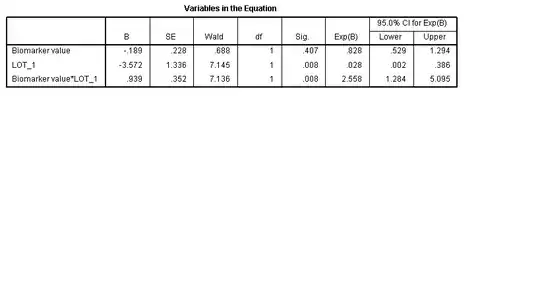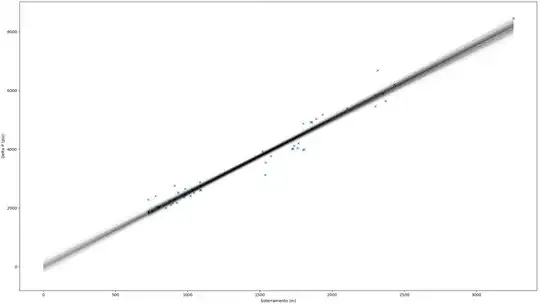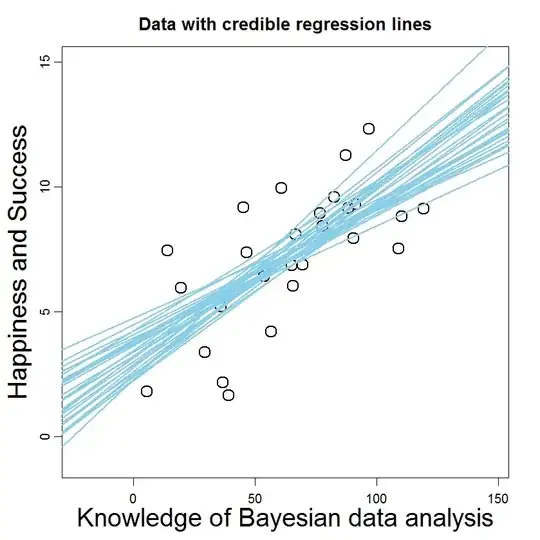I have some data to which I'd like to fit a GLM using PyMC3. Here are the posterior predictive regression lines plotted along with the data points:
Domain knowledge indicates that a linear model with zero-intercept is appropriate and the data looks linearly related. However, it feels as though the fit is not OK since the post predictive lines seem to cover only a few data points, leaving most out. Is this intuition correct? In this case, 64% of the data points are not covered by the regression lines.
The PyMC3 model I used is really simple:
with pm.Model() as geom_glm:
pm.GLM.from_formula('delta_p ~ 0 + sot', dados)
step = pm.Metropolis()
trace = pm.sample(draws = 10**4, step = step)
plt.plot(dados['sot'], dados['delta_p'], 'x', label='dados')
pm.plot_posterior_predictive_glm(trace,
lm = lambda x, sample: sample['sot'] * x,
eval = dados['sot'],
label = 'posterior predictive check',
samples = 1000)
If I allow the intercept to be inferred from the data as well (even though domain knowledge indicates this is inappropriate), the situation doesn't seem to improve much:


